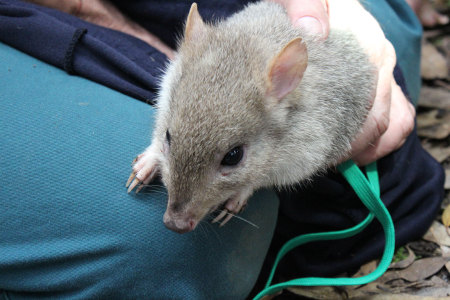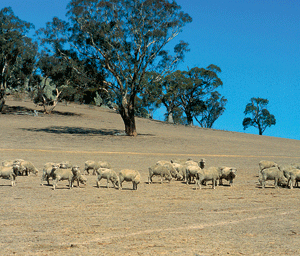
|
Published: 7 November 2011
Bettongs have bounced back to Canberra
Observed by Burke and Wills as plentiful during their Australian expedition in 1860, the Eastern Bettong was made extinct by foxes, cats and pastoralism by the mid-1920s. Now, in a conservation twist, surviving populations in Tasmania are also under threat from these pressures, and so have been re-introduced to restored habitat near Canberra.

|
|
The Eastern or Tasmanian Bettong, Bettongia gaimardi. Credit: Courtesy of the ACT Government
|
The Eastern Bettong (Bettongia gaimardi), also known as the Tasmanian Bettong, is a small member of the kangaroo family that ranged along the entire eastern seaboard of Australia. The Bettongs are only listed as “near threatened” in Tasmania (under the IUCN Red List), but the arrival of the European fox has raised the threat to their numbers.
As insurance, a breeding colony of 30 Bettongs have been imported to Tidbinbilla outside Canberra. The plan is for progeny from this colony to be released – or reintroduced – next year into a larger, protected grassy woodlands restoration project being carried out in Mulligans Flat and Goorooyarroo Nature Reserves, a collaboration between the ACT Government, the CSIRO, and led by Dr Adrian Manning of the ANU’s Fenner School.
The restoration project itself aims to better understand the grassy woodland communities and give land managers and the wider community the tools to improve and protect them.
Announcing the return of the Bettongs to the ACT, state Minister for Environment and Sustainable Development, Simon Corbell, said, ‘The arrival of the Eastern Bettong from Tasmania is a critical first step in returning a locally extinct species to our grassy woodlands.’
‘It is thought that Eastern Bettongs serve as “ecosystem engineers” in woodlands, turning over the soil, and improving the penetration of water and nutrients.’
Tasmania’s Department of Primary Industry, Parks, Water and the Environment granted funding, necessary approvals and provided important logistical support for the Bettongs’ transfer to the ACT.
Source: ACT government



